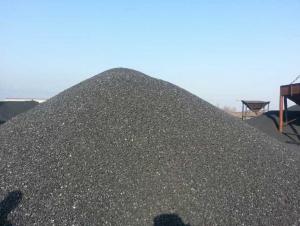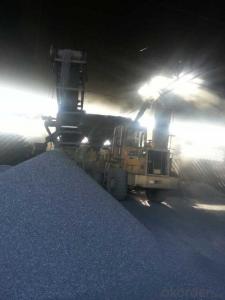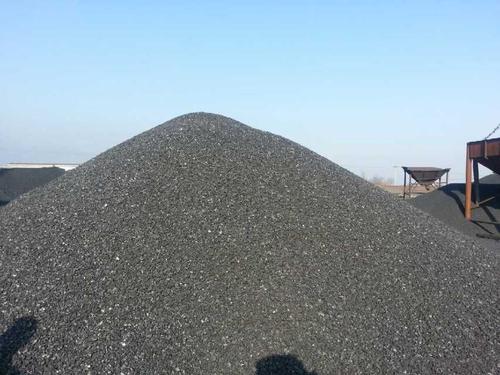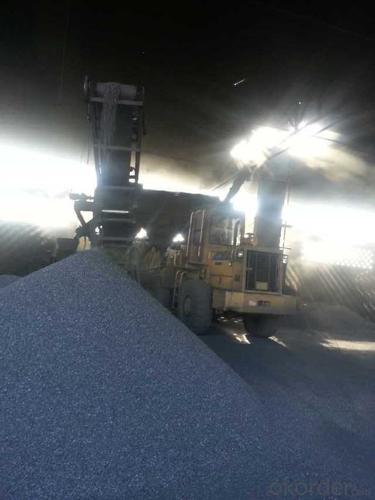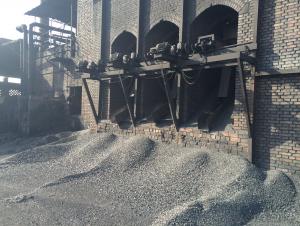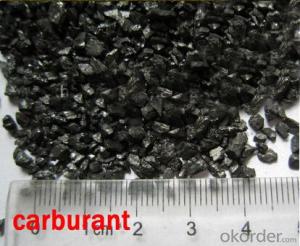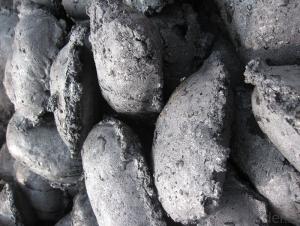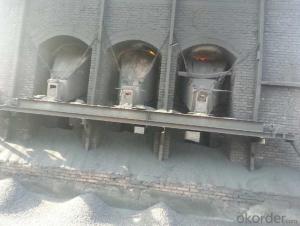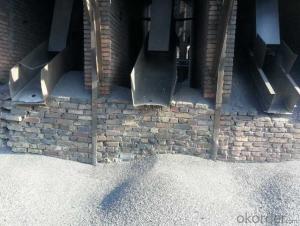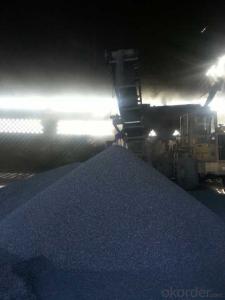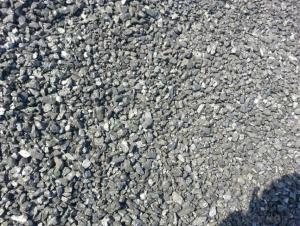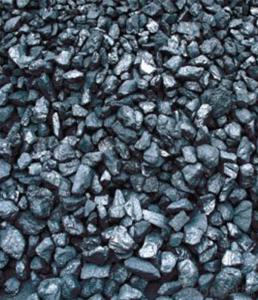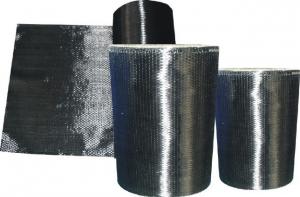Injection Carbon FC94 with Good and Stable Quality
- Loading Port:
- Tianjin
- Payment Terms:
- TT OR LC
- Min Order Qty:
- 20 m.t.
- Supply Capability:
- 5000 m.t./month
OKorder Service Pledge
OKorder Financial Service
You Might Also Like
Injection Carbon FC94 with good and stable quality
Packaging & Delivery
25kgs/50kgs/1ton per bag or as buyer's request
Injection Carbon FC94 with good and stable quality
Specifications
Calcined Anthracite
Fixed carbon: 90%-95%
S: 0.5% max
Size: 0-3. 3-5.3-15 or as request
Injection Carbon FC94 with good and stable quality
It used the high quality anthracite as raw materials through high temperature calcined at over 2000 by the DC electric calciner with results in eliminating the moisture and volatile matter from anthracite efficiently, improving the density and the electric conductivity and strengthening the mechanical strength and anti-oxidation. It has good characteristics with low ash, low resistvity, low sulphur, high carbon and high density. It is the best material for high quality carbon products.
Injection Carbon FC94 with good and stable quality
Advantage and competitive of caclined anthracite:
1. strong supply capability
2. fast transportation
3. lower and reasonable price for your reference
4.low sulphur, low ash
5.fixed carbon:95% -90%
6..sulphur:lower than 0.3%
Injection Carbon FC94 with good and stable quality
General Specification of Calcined Anthracite:
| FC | 95 | 94 | 93 | 92 | 90 |
| ASH | 4 | 5 | 6 | 6.5 | 8.5 |
| V.M. | 1 | 1 | 1 | 1.5 | 1.5 |
| S | 0.3 | 0.3 | 0.3 | 0.35 | 0.35 |
| MOISTURE | 0.5 | 0.5 | 0.5 | 0.5 | 0.5 |
Pictures
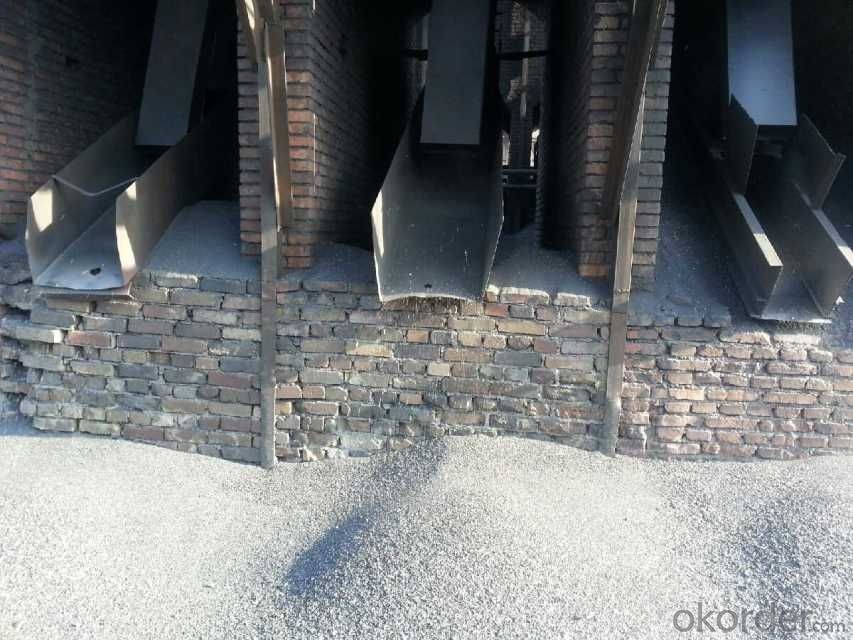
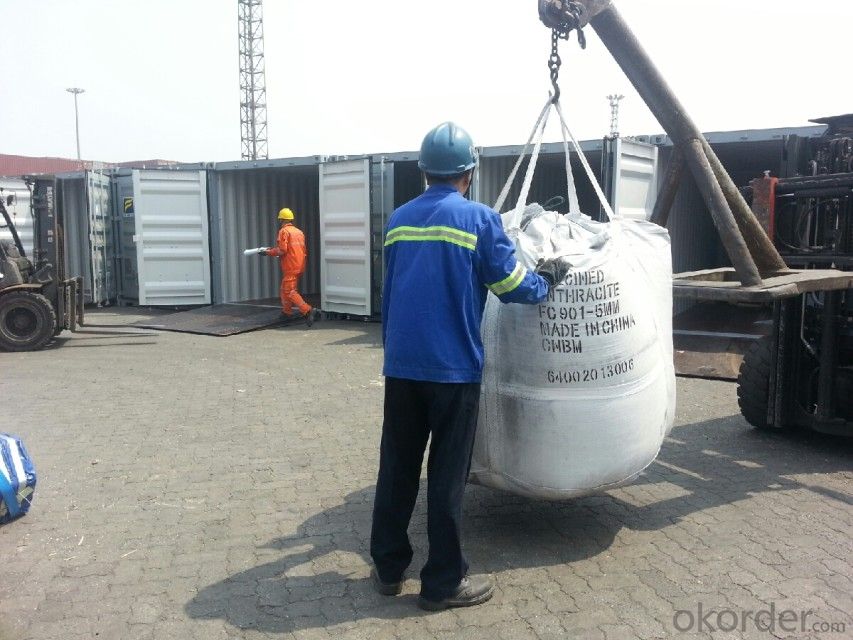
FAQ:
Injection Carbon FC94 with good and stable quality
Why we adopt INJECTION CARBON?
Carbon Additives used as additive in steel making process. It made from well-selected Tai Xi anthracite which is low in content of ash, sulphur, phosphorus, high heat productivity, high chemically activation.
Mainly industry property of it is: instead of traditional pertroleum coal of INJECTION CARBON, reduce the cost of steelmaking.
- Q: What are the consequences of increased carbon emissions on technological advancements?
- The consequences of increased carbon emissions on technological advancements can be significant. The primary consequence is the acceleration of climate change, which can lead to adverse effects such as rising global temperatures, sea-level rise, extreme weather events, and ecosystem disruptions. These consequences pose various challenges to technological advancements. On one hand, they create a pressing need for innovative solutions to mitigate and adapt to climate change, such as renewable energy sources, carbon capture and storage technologies, and sustainable agricultural practices. This can drive research and development in these areas, fostering technological advancements. On the other hand, increased carbon emissions can also divert resources and attention away from other technological advancements, as efforts are redirected towards climate change mitigation and adaptation strategies. Additionally, the consequences of climate change, such as natural disasters or resource scarcity, can disrupt technological infrastructure and impede further advancements. Therefore, while there can be opportunities for technological advancements in response to increased carbon emissions, the overall consequences can also present challenges and limitations.
- Q: Can barbecue carbon still have the effect of absorbing formaldehyde?
- 2) activated bamboo charcoal is internationally recognized as a formaldehyde master, active bamboo charcoal masks, gas masks are activated carbon. This product uses the physical function of activated carbon, deodorization, detoxification, without any chemical additives, no impact on the human body, adsorption slow, easy to saturated. There are many kinds of active ingredients, such as coconut shell charcoal, shell charcoal, coal activated carbon and so on.
- Q: How does carbon impact the availability of clean transportation?
- Carbon emissions from burning fossil fuels contribute to climate change, which affects the availability of clean transportation. Increased levels of carbon dioxide in the atmosphere trap heat, leading to rising global temperatures and extreme weather events. This, in turn, impacts the infrastructure necessary for clean transportation, such as roads, bridges, and railways. Additionally, carbon-intensive transportation systems, like gasoline-powered vehicles, contribute to air pollution, which further hinders the development and adoption of cleaner transportation alternatives like electric vehicles.
- Q: They include a cementite, two cementite, three cementite, eutectic cementite and eutectoid cementite, and compare their temperature, composition and morphology
- Two: cementite in iron graphite phase, carbon content more than 0.77%, in A (Fe + Fe3C) two-phase region precipitation of Fe3C is two times the cementite formation temperature in the eutectic temperature (1148 DEG C) and eutectoid temperature (727 DEG C), morphology of the mesh is a typical carbon content. From 0.77% to 6.69% is the typical composition range.
- Q: How is carbon used in the medical field?
- Carbon is used in various ways in the medical field due to its unique properties. One of the most common applications of carbon is in the form of activated charcoal, which is widely used in hospitals to treat cases of poisoning or drug overdoses. Activated charcoal has a large surface area, allowing it to adsorb toxins and chemicals, preventing them from being absorbed into the bloodstream. Carbon is also utilized in medical imaging techniques such as positron emission tomography (PET) scans. In PET scans, a radioactive form of carbon, known as carbon-11, is used to label molecules such as glucose. This labeled carbon is then injected into the patient, and its distribution in the body is detected by a PET scanner. This technique helps in the diagnosis and monitoring of various diseases, including cancer, by visualizing metabolic activity in different organs and tissues. Furthermore, carbon-based materials, such as carbon nanotubes and graphene, are extensively studied for their potential applications in drug delivery systems. These materials can be modified to carry therapeutic agents, such as drugs or genes, and deliver them to specific targets in the body. Carbon nanotubes, in particular, have shown promising results in enhancing drug delivery efficiency and reducing side effects. Moreover, carbon is used in the manufacturing of medical devices and implants. Carbon fiber-reinforced polymers are employed in orthopedic implants and prosthetics due to their strength, flexibility, and biocompatibility. Carbon-based materials also play a crucial role in the production of electrodes for various medical devices like pacemakers, defibrillators, and neurostimulators. In summary, carbon finds numerous applications in the medical field, ranging from treating poisonings to enhancing diagnostic imaging techniques, drug delivery systems, and the production of medical devices. It continues to be an essential component in advancing medical technology and improving patient care.
- Q: What are some common compounds of carbon?
- Some common compounds of carbon include carbon dioxide (CO2), methane (CH4), ethane (C2H6), propane (C3H8), butane (C4H10), ethanol (C2H5OH), and acetic acid (CH3COOH).
- Q: Who can explain that bare feet on fire carbon don't burn feet?
- These two substances are edible, containing in the mouth is naturally very safe, plus cinnabar is red, and dissolve it in the water, this red holy water is more mysterious.From time to time to the fire scattered in the "law" law of water spray powder "and" add before have feet soaking in full dissolution of cinnabar and borax "holy water", which is on the fire and carbon between your feet to form a thin protective layer of "sand", which has scientific significance, is is that all the fairies and the real reason for lossless hair or.The world is material. A scholar once said, "what is a ghost?" Some phenomena that cannot be explained by science are ghosts in our hearts. If we can continue to search in the way of science, ghosts will leave us!
- Q: What are the impacts of carbon emissions on the stability of kelp forests?
- Carbon emissions have significant impacts on the stability of kelp forests. Increased carbon dioxide levels in the atmosphere lead to ocean acidification, which negatively affects the growth and survival of kelp. Acidic conditions hinder the ability of kelp to absorb essential nutrients, weaken their structure, and make them more susceptible to damage from storms and other disturbances. Additionally, rising ocean temperatures associated with carbon emissions can lead to the expansion of harmful algal blooms that compete with kelp for light and nutrients. These combined effects pose a threat to the stability and biodiversity of kelp forests, with potential cascading impacts on the marine ecosystem.
- Q: How can we reduce carbon emissions from transportation?
- Reducing carbon emissions from transportation is crucial to mitigate climate change and improve air quality. There are several strategies that can be implemented to achieve this goal: 1. Promote the use of electric vehicles (EVs): Encouraging the adoption of electric cars, buses, and bikes can significantly reduce carbon emissions. Governments can provide incentives such as tax credits, rebates, and subsidies to make EVs more affordable. Expanding the charging infrastructure network is also essential to alleviate range anxiety and increase EV adoption. 2. Invest in public transportation: Enhancing and expanding public transportation systems can reduce the number of individual vehicles on the road, leading to fewer emissions. Governments should prioritize the development of efficient and accessible public transport networks, including buses, trains, and trams. 3. Encourage active transportation: Encouraging walking, cycling, and other forms of active transportation can significantly reduce carbon emissions from short-distance trips. Building safe and convenient infrastructure, such as bike lanes and pedestrian-friendly streets, can promote these modes of transport. 4. Improve fuel efficiency: Encouraging the production and purchase of vehicles with higher fuel efficiency standards can greatly reduce carbon emissions. Governments should implement strict regulations and offer incentives to manufacturers that produce fuel-efficient vehicles. 5. Develop and promote alternative fuels: Investing in the development and use of alternative fuels, such as biofuels, hydrogen, and renewable natural gas, can help reduce carbon emissions from transportation. Governments should provide incentives and support research and development efforts to accelerate the adoption of these cleaner fuels. 6. Implement congestion pricing and road tolls: Charging drivers for using congested roads or entering certain areas can reduce traffic congestion and encourage the use of public transportation or carpooling. By discouraging unnecessary car trips, carbon emissions can be significantly reduced. 7. Encourage telecommuting and flexible work arrangements: Promoting telecommuting and flexible work arrangements can reduce the number of commuting trips and, consequently, carbon emissions. Governments and businesses can provide incentives to encourage companies to adopt these practices. 8. Rethink urban planning: Designing cities and communities with mixed land-use patterns, where residential, commercial, and recreational areas are within close proximity, can reduce the need for long commutes and promote active transportation. 9. Raise awareness and provide education: Educating the public about the environmental impact of transportation choices and the benefits of sustainable modes of transport is crucial. Governments and organizations should launch campaigns to raise awareness and provide information about the carbon footprint of different transportation options. Reducing carbon emissions from transportation requires a multifaceted approach involving government policies, technological advancements, and changes in individual behavior. By implementing these strategies, we can make significant progress in reducing carbon emissions and creating a more sustainable transportation system.
- Q: The relative molecular mass was between 120-150. The testThe organic matter M, which contains only carbon, hydrogen and oxygen, was measured by mass spectrometer. The relative molecular mass was between 120-150. The mass fraction of oxygen element measured by experiment is 48.48%, the ratio of hydrocarbon to mass is 15:2, and only COOH in M molecule is measured by infrared spectrometer. Then the M formula is?
- The mass fraction of oxygen element is 48.48%, the mass fraction of hydrocarbon is =51.52%, and the mass ratio is 15:2. The mass fraction of carbon is =51.52%x15/ (15+2) =45.46%, and the mass fraction of hydrogen is =51.52%x2/ (15+2) =6.06%The atomic number of C, H and O is higher than that of =45.46%/12:6.06%/1:48.48%/16=3.79:6.06:3.03Molecules contain only COOH, and oxygen atoms must be even numbers.Therefore, the number of atoms in C, H and O can be reduced to =5:8:4, which may be C5H8O4, and the relative molecular weight is 132
Send your message to us
Injection Carbon FC94 with Good and Stable Quality
- Loading Port:
- Tianjin
- Payment Terms:
- TT OR LC
- Min Order Qty:
- 20 m.t.
- Supply Capability:
- 5000 m.t./month
OKorder Service Pledge
OKorder Financial Service
Similar products
Hot products
Hot Searches
